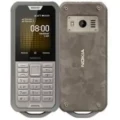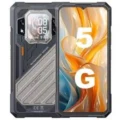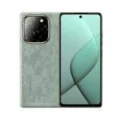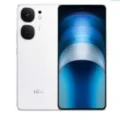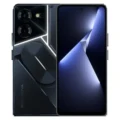Nokia 3.1 Plus






- : 2/3GB RAM Helio P22
- : 6.0" 720x1440 pixels
- : 3500mAh 10W
- : 13MP 1080p
Introducing the Nokia 3.1 Plus, a sleek and powerful smartphone that seamlessly blends style with functionality. Packed with features to elevate your mobile experience, the Nokia 3.1 Plus is designed for those who demand more from their devices.
With its expansive 6-inch HD+ display, the Nokia 3.1 Plus delivers stunning visuals and vibrant colors, making every photo, video, and app come to life. The large screen size ensures an immersive viewing experience, perfect for browsing, gaming, and multimedia consumption.
Powered by a robust octa-core processor, this smartphone handles multitasking with ease, ensuring smooth performance and responsiveness. Whether you’re streaming videos, running apps, or juggling multiple tasks, the Nokia 3.1 Plus keeps up with your dynamic lifestyle.
Capture life’s moments in stunning detail with the dual rear cameras of the Nokia 3.1 .The 13MP main sensor combined with a 5MP depth sensor allows you to take striking photos with bokeh effects, adding a professional touch to your photography. The 8MP front camera is perfect for capturing sharp and clear selfies.
Running on a pure, secure, and up-to-date Android One platform, the Nokia 3.1 ensures a bloatware-free experience and regular software updates. This not only enhances the overall performance but also keeps your device protected with the latest security features.
Stay connected all day with the Nokia 3.1 Plus’s long-lasting battery life. The 3500mAh battery provides ample power to keep you going, whether you’re working, socializing, or enjoying your favorite content. Additionally, the phone supports fast charging, minimizing downtime and maximizing convenience.
Embrace a seamless and stylish mobile experience with the Nokia 3.1 – where impressive design meets powerful performance. Elevate your smartphone game with this feature-packed device that caters to your every need.
Specs
Network
| 2G Network GSM 850 / 900 / 1800 / 1900 - SIM 1 & SIM 2 (dual-SIM) CDMA 800 / 1900 |
GSM 850 / 900 / 1800 / 1900 - SIM 1 & SIM 2 |
| 3G Network |
HSDPA 850 / 900 / 1900 / 2100 HSDPA 850 / 1700(AWS) / 1900 - USA |
| 4G Network |
2, 4, 5, 12, 14, 29, 30 - USA |
| Speed |
HSPA 42.2/5.76 Mbps, LTE Cat4 150/50 Mbps |
LAUNCH
| Announced | October, 2025 |
| Status |
Available. Released 2018, October |
BODY
| Dimensions | 156.9 x 76.4 x 8.2 mm (6.18 x 3.01 x 0.32 in) |
| Weight | 180 g (6.35 oz) |
| Build | Glass front, aluminum back, aluminum frame |
| SIMs SIM (Subscriber Identity Module) is a small card that contains mobile network subscriber's account information. This allows the phone using the card to attach to a mobile network. The SIM card is most commonly associated with GSM and UMTS mobile networks. Moving a SIM card from one phone to another allows a subscriber to switch mobile phones without having to contact their mobile network carrier. SIM cards can also be used by a phone to store limited amounts of data, such as phone numbers and text messages. |
Dual SIM (Nano-SIM, dual stand-by) |
Display
| Display Type Display Technology => A number of display technologies and types used in mobile phones => TFT (Thin Film Transistor), IPS (In-Place Switching), OLED (Organic Light Emitting Diode), AMOLED (Active-Matrix Organic Light-Emitting Diode), Super AMOLED (an even advanced version of AMOLED), Resistive Touchscreen (Resistive touchscreens contain two layer of conductive material with a very small gap between them which acts as a resistance), Capacitive Touchsceen (Capacitive touchscreen technology consists of a layer of glass coated with a transparent conductor) | IPS LCD |
| Size | 6.0 inches, 92.9 cm2 (~77.5% screen-to-body ratio) |
| Resolution | 720 x 1440 pixels, 18:9 ratio (~268 ppi density) |
PLATFORM
| Operating System OS => Every computer system run on a base software called Operating System (OS). Operating System controls all basic operations of the computer (such as smartphone, PDAs, tablet computers and other handheld devices). The Operating System allows the user to install and run third party applications (apps), apps are used to add new functionality to the device. | Android 8.1 (Oreo), upgradable to Android 10, Android One |
| Chipset Chipset is a group of integrated circuits designed to perform one or a more dedicated functions, often with real time computing constraints, Popular smartphones are equipped with more advanced embedded chipsets that can do many different tasks depending on their programming. | Mediatek MT6762 Helio P22 (12 nm) - Global Qualcomm SDM439 Snapdragon 439 (12 nm) - USA |
| CPU CPU (Central Processing Unit) mostly known as processors, CPU processes instructions in order to carry out certain functions that make your device operate properly. Processors are often described as the brain of computers, smartphones and tablets, Smartphones and tablets rely on processors to carry out their every task, Processors are an incredibly important factor in selecting any type of computing device, including your smartphone. | Octa-core 2.0 GHz Cortex-A53 - Global Octa-core (4x1.95 GHz Cortex-A53 & 4x1.45 GHz Cortex A53) - USA |
| GPU GPU (Graphics Processing Unit) is a single-chip processor designed to rapidly manipulate and alter memory to accelerate the creation of images in a frame buffer intended for output to a display, This includes things such as lighting effects, object transformations, and 3D motion. | PowerVR GE8320 - Global Adreno 505 - USA |
MEMORY
| Card Slot Memory Card Slot is a special slot for inserting a memory card. Memory cards allow you to expand the phone's built-in memory, A memory card (sometimes called a flash memory card or a storage card) is a small storage medium used to store data such as text, pictures, audio, and video, for use on small, portable or remote computing devices such as mobile phones, mp3 players, digital cameras. | microSDXC (dedicated slot) |
| Internal | 16GB 2GB RAM, 32GB 2GB RAM, 32GB 3GB RAM eMMC 5.1 |
MAIN CAMERA
| Cameras Specs Today’s smartphones come equipped with a very comprehensive set of camera related specifications. Our smartphone, for many of us, has become our primary camera due to it being the one we always have with us. |
13 MP, f/2.0, AF 5 MP, f/2.4, (depth) |
| Video | 1080p@30fps |
| Camera Features | LED flash, HDR, panorama |
SELFIE CAMERA
| Cameras Specs Today’s smartphones come equipped with a very comprehensive set of camera related specifications. Our smartphone, for many of us, has become our primary camera due to it being the one we always have with us. |
8 MP, f/2.2 |
| Features |
LED flash, HDR |
| Video | 720p@30fps |
SOUND
| Loudspeaker | Yes |
| 3.5mm jack |
Yes |
COMMS
| WLAN |
Wi-Fi 802.11 b/g/n, Wi-Fi Direct |
| Positioning |
GPS, GLONASS, BDS, GALILEO |
| Bluetooth Bluetooth is a wireless communications technology for exchanging data between mobile phones, headsets, computers and other network devices over short distances without wires, Bluetooth technology was primarily designed to support simple wireless networking of personal consumer devices. | 4.1, A2DP, LE |
| Infrared Infrared connectivity is an old wireless technology used to connect two electronic devices. It uses a beam of infrared light to transmit information and so requires direct line of sight and operates only at close range. | |
| USB | microUSB 2.0, OTG |
| NFC NFC (Near field communication) is a set of standards for smartphones and similar devices to establish peer-to-peer radio communications with each other by touching them together or bringing them into proximity, usually no more than a few inches. | |
| Radio |
Features
| Sensors Sensors are electronic components that detects and responds to some type of input from the physical environment. The specific input could be light, heat, motion, moisture, pressure and location, The output is generally a signal that is converted to use in computing systems, a location sensor, such as a GPS receiver is able to detect current location of your electronic device. |
Fingerprint (rear-mounted), accelerometer, gyro, proximity, compass |
BATTERY
| Battery Type Battery Type => Cell phones run on various kinds of batteries depending on the manufacturer, phone size or shape and features. There are basically four types of cell phone batteries => Lithium Polymer, Lithium Ion, Nickel Metal Hydride and Nickel Cadmium. | Li-Ion (Lithium Ion) |
| Capacity Battery Capacity is a measure (typically in Amp-hr) of the charge stored by the battery, and is determined by the mass of active material contained in the battery. The battery capacity represents the maximum amount of energy that can be extracted from the battery under certain conditions. | 3500 mAh |
| Placement | non-removable |
| Charging The functionality responsible for recharging batteries in portable devices, such as mobile phones, significantly influences both battery lifespan and the practicality of daily product usage.The charging process, encompassing factors like voltage, current, and completion actions, is contingent upon the battery's size and type.Contemporary battery chargers dynamically adjust charging parameters based on the battery's current charging state. Charging an empty battery poses no safety risk, allowing for a quicker charging process. Consequently, many charging speed benchmarks, including ours, specify the battery level achieved after a 30-minute session on an empty battery.Standard chargers with a power output of 5V/1A, equivalent to 5W, serve as a baseline, with anything surpassing this speed classified as quick or fast charging. | 10W wired |
MISC
| Colors |
Blue, White, Gray |
| Model | TA-1118, TA-1125, TA-1113, TA-1117, TA-1124, TA-1125 |
| SAR EU Each GSM handset has a radio transmitter and receiver in order to operate in the wireless GSM network. That transceiver is manufactured so that when used next to the ear and when worn on the belt, it won't exceed the limits for exposure to radio frequency energy set by the authorities.The authorities in question here are the Federal Communications Commission (FCC) of the U.S. Government, Industry Canada of the Canadian Government (IC), and the Council of the European Union. |
0.41 W/kg (head) 1.58 W/kg (body) |
| Price |
About 120 EUR |
TESTS
Reviews
Disclaimer Note
We strive to maintain accurate and up-to-date content on our website for general information purposes only. Please refrain from using the material for business, legal, or any other decisions.


